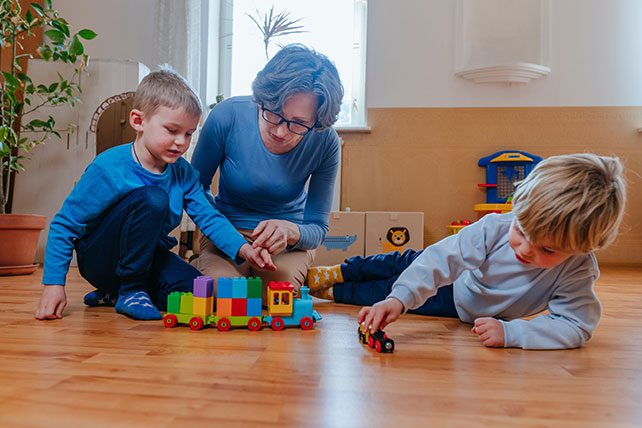Want to learn more about teaching with toys? Eager to make the Bible come alive for children? Maybe you’ve heard of the book “Teaching Physics with Toys.” Here is the philosophy behind it:
Science is best understood by providing students with opportunities to make connections between their own world and scientific concepts. What’s more natural than using toys as learning tools to teach science to elementary and middle school students? For teachers and students alike, toys can provide motivational and experiential links between science concepts and everyday experience.
I think this is brilliant. Why? Because Jesus used object lessons frequently. He connected truths to familiar objects from people’s everyday world. Physical objects they saw, touched, used, or interacted with regularly: birds, flowers, fish, money, seeds, rocks, salt, trees, and more.
Teaching with Toys in Sunday School Classrooms
If you want Bible truths to stick in the long-term memory of children, then tie the truths to objects kids are familiar with. And some of their most familiar objects are toys.
Remember your favorite toys growing up? I loved Stretch Armstrong, Atari 2600, G.I. Joe, Lite-Brite, Silly Putty. (Okay, I’m dating myself.) If those toys had been connected to biblical truths, I’m sure I’d be thinking not only about the toys right now but also about the truths.
Tips for Teaching with Toys
Here’s the process to use in Sunday school:
1. Start with the biblical truth you want to share.
First up: This forms the basis. The toy or object is simply a way to illustrate the Sunday school lesson.
2. Find a familiar toy or object from current kid culture.
Next be ready to visit the mall, if necessary. The more children use the item, the more effectively it will connect the truth to their long-term memory.
3. Use the toy or object while teaching.
Clearly illustrate the Bible truth in age-appropriate language.
4. Remind kids to think about the truth whenever they see that toy.
This builds connections and makes lessons stick.
5. Encourage kids to share the truth they learned with a friend
They can do this when they’re playing or hanging out together and see the toy or object.
6. Partner with parents.
Last but definitely not least… Share with moms and dads the truth and the toy or object you used. Then they can reinforce the lesson at home. Also encourage parents to look for ways to tie truth to other toys or objects from their child’s everyday world.

